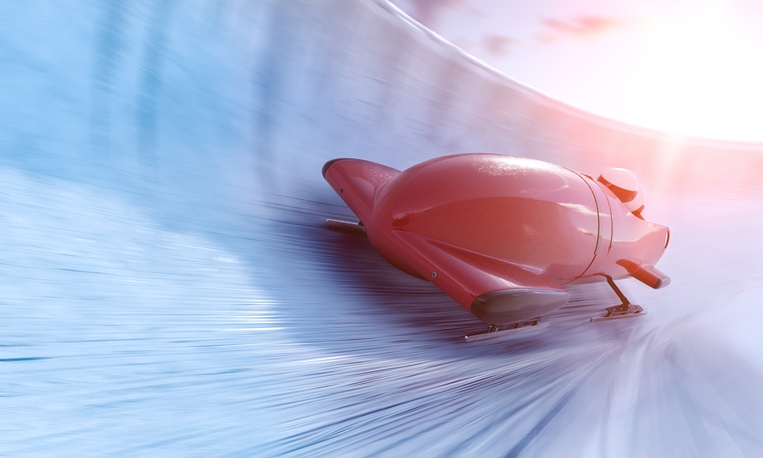 Every four years, the Winter Olympics shows up, and we are in awe of some of the most gifted athletes on the planet. Ice skaters gliding upon an edge like a razor blade, yet choreographed to music. Bobsledders who risk near death contently as they barrel through corners (mortals, like myself, need not apply). And the cross-country skiers boast some of the highest aerobic capacities of any athlete in the world. For the majority of us, riding down a hill on an inner tube does the trick, but that doesn’t mean we can’t infuse your workout with the tools to not only get a great workout, but dream for gold!
Every four years, the Winter Olympics shows up, and we are in awe of some of the most gifted athletes on the planet. Ice skaters gliding upon an edge like a razor blade, yet choreographed to music. Bobsledders who risk near death contently as they barrel through corners (mortals, like myself, need not apply). And the cross-country skiers boast some of the highest aerobic capacities of any athlete in the world. For the majority of us, riding down a hill on an inner tube does the trick, but that doesn’t mean we can’t infuse your workout with the tools to not only get a great workout, but dream for gold!
Looking around the fitness center, finding options to get into Olympic shape isn’t too difficult. With a little imagination, you can add these three exercises to your workout today with little or no skating, skiing, or bobsledding experience. Now get ready for the NIFS Winter Olympic Special: Going for Gold!
Helix Lateral Elliptical
If you want powerful legs, endurance, and balance, you might want to take a look at speed skating. Not unlike its summer Olympic running counterpart, speed skating requires a lot of practice. To accelerate, the skater pushes side to side, arms working to not only balance but also propel the body forward.
To simulate this motion, the Helix Lateral Elliptical allows you to safely perform the lower-body movement used in speed skating. Being able to do this exercise year round in the friendly confines of NIFS is a definite bonus. A built-in console allows you to track intensity and time. A quick Tabata (:20 on, :20 off) for 5–8 rounds can give your workout a nice lift. Be sure to try both directions!
Concept II Ski Erg
 The concept of cross-country skiing for sport comes from areas in which getting around is easier and more common on skis than trudging through the snow. Out of necessity and the evolution of transportation, people in the Nordic region of Europe are now famously known for producing some of the highest VO2 Max numbers in the world. Your VO2 Max is the quantification of how efficiently your body uses oxygen when you exercise.
The concept of cross-country skiing for sport comes from areas in which getting around is easier and more common on skis than trudging through the snow. Out of necessity and the evolution of transportation, people in the Nordic region of Europe are now famously known for producing some of the highest VO2 Max numbers in the world. Your VO2 Max is the quantification of how efficiently your body uses oxygen when you exercise.
With that being said, how can you get similar exercise without all the snow or burden of buying skis? Concept II, the company that makes rowing machines, designed a vertical rowing machine that can simulate the upper-body cross-country skiing pattern. Like the Helix, there is a console to track your progress, intensity, and time. Once you get the hang of the Ski Erg, you can see how far you can get in 60 seconds, rest, and then do it again!
Prowler Sled Push
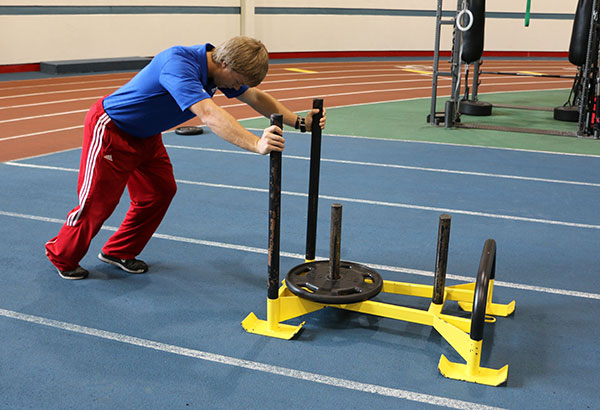 One of the most fascinating events at the winter Olympics is the bobsled. A team of individuals, working as one, propels a bobsled down a narrow, icy chute. To get the sled going, the team relies heavily on otherworldly leg strength. The rest of the event takes skill and some luck, as this is a race to the finish line. The winning team usually has a complete balance of strength, skill, balance, and weight.
One of the most fascinating events at the winter Olympics is the bobsled. A team of individuals, working as one, propels a bobsled down a narrow, icy chute. To get the sled going, the team relies heavily on otherworldly leg strength. The rest of the event takes skill and some luck, as this is a race to the finish line. The winning team usually has a complete balance of strength, skill, balance, and weight.
The exercise you can do at NIFS that mimics this movement most closely is the Prowler Sled Push. There are many sled options to choose from, but this one allows you to start in a standing position and requires you to physically push the weighted sled (no attachments needed). This can be done in several ways: heavy weights for short distance and lighter weights for longer duration as well as sprints. For a great partner routine, relay races are a perfect way to give you and some friends exercise and breaks. Have one person push the sled, while the other two are on the “ends.” As the sled approaches, the next person takes the sled-pushing responsibility and pushes it back to the starting point. This continues until a certain distance is reached or for time. Try to mark a 30-yard distance and continue this exercise for 2–3 minutes for one set. Be sure to enjoy your rest times!
***
Whether you are looking for a new routine or really are dreaming about the Olympics, these three exercises are sure to give you a great workout. If anything, we can appreciate the hard work and dedication it takes to become an Olympian. For more fun fitness ideas, check back to the NIFS blog and social media outlets (YouTube, Instagram, Facebook, Twitter). Until next time, friends, dream big! Go for gold!
This blog was written by Thomas Livengood, Health Fitness Instructor and Personal Trainer. To read more about the NIFS bloggers, click here.


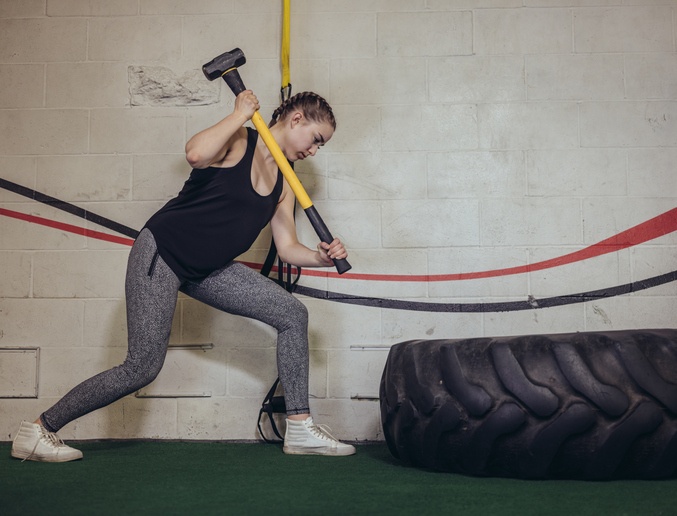 Greetings NIFS friends! Hopefully your New Year’s resolutions are keeping you more active at the gym and less active at the buffet line. All joking aside, getting back to the gym can be challenging, especially if you are not sure what to do when you get there or if you are burnt out on cookie-cutter workouts that are barely working anymore. With that being said, introducing new equipment, ideas, and strategies can be a daunting task. Don’t let that get you down, though, because we are here to rescue your workout!
Greetings NIFS friends! Hopefully your New Year’s resolutions are keeping you more active at the gym and less active at the buffet line. All joking aside, getting back to the gym can be challenging, especially if you are not sure what to do when you get there or if you are burnt out on cookie-cutter workouts that are barely working anymore. With that being said, introducing new equipment, ideas, and strategies can be a daunting task. Don’t let that get you down, though, because we are here to rescue your workout!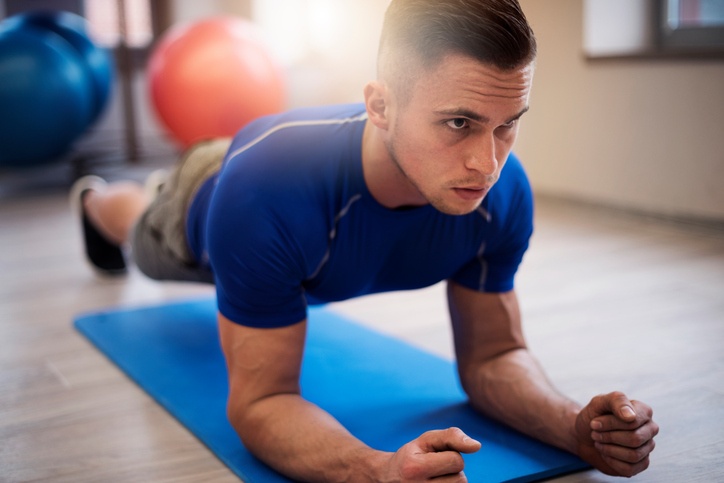 Some of the number-one fitness goals are to strengthen the core, lose belly fat, and get six-pack abs. These are all pretty good goals that can be addressed by a fitness professional and a dietitian, but everyone might not have that luxury. From a traditional perspective, we have mainly used a few ab exercises such as crunches, sit-ups, and variations of them. For the most part, these are better than the alternative—nothing at all.
Some of the number-one fitness goals are to strengthen the core, lose belly fat, and get six-pack abs. These are all pretty good goals that can be addressed by a fitness professional and a dietitian, but everyone might not have that luxury. From a traditional perspective, we have mainly used a few ab exercises such as crunches, sit-ups, and variations of them. For the most part, these are better than the alternative—nothing at all. Anti-rotational holds: Using either a cable machine or bands, stand perpendicular to the anchor point while holding your handle directly in front of your midpoint. To increase the intensity, I suggest introducing a kneeling or half-kneeling position, making the core work even harder.
Anti-rotational holds: Using either a cable machine or bands, stand perpendicular to the anchor point while holding your handle directly in front of your midpoint. To increase the intensity, I suggest introducing a kneeling or half-kneeling position, making the core work even harder.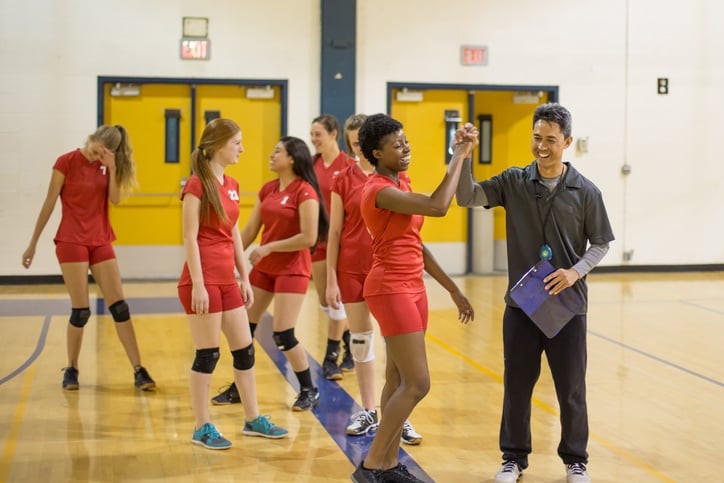 For many adults, memories of physical education class are usually one of two greatly different experiences. For me, physical education was the highlight of my day and was never a burden or stressor in my life. For others,
For many adults, memories of physical education class are usually one of two greatly different experiences. For me, physical education was the highlight of my day and was never a burden or stressor in my life. For others, 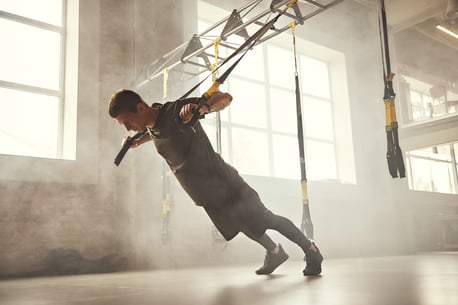 Starting from the ground up might sound like a daunting task, but with
Starting from the ground up might sound like a daunting task, but with 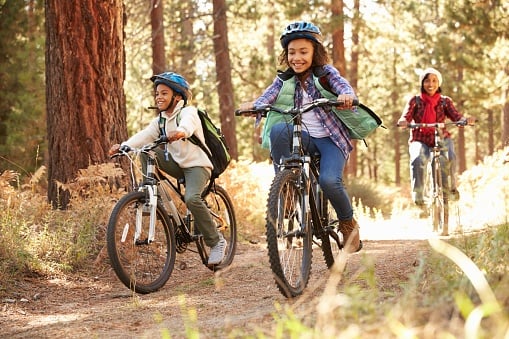 In Indiana, we experience all four seasons (sometimes all in the same day!). Your outdoor training and exercise regimen can be effected significantly by the season. While summer can be a fun, exciting time, exercising outdoors can be daunting and somewhat risky. While making sure you have
In Indiana, we experience all four seasons (sometimes all in the same day!). Your outdoor training and exercise regimen can be effected significantly by the season. While summer can be a fun, exciting time, exercising outdoors can be daunting and somewhat risky. While making sure you have 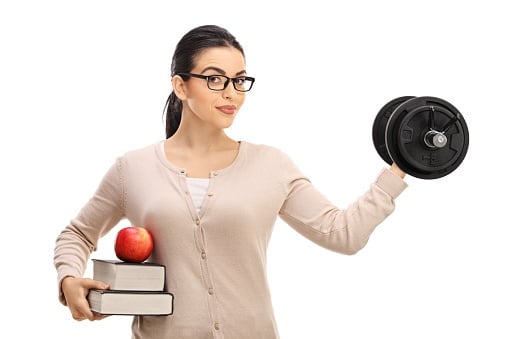 Welcome back to school! Or, if you are new to the college experience, welcome to your first adventure in time management and balancing your life. This not only includes your academics and social life, but other areas that go under the radar as less important. I’m talking about fitness and wellness. College and university fitness centers are usually well populated with individuals with a wide variety of goals ranging from stress reduction to spring break abs, to meeting people.
Welcome back to school! Or, if you are new to the college experience, welcome to your first adventure in time management and balancing your life. This not only includes your academics and social life, but other areas that go under the radar as less important. I’m talking about fitness and wellness. College and university fitness centers are usually well populated with individuals with a wide variety of goals ranging from stress reduction to spring break abs, to meeting people.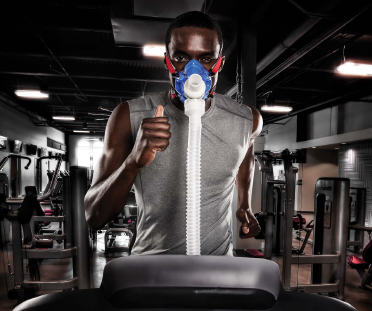 VO2 Max testing is a test to quantify the efficiency of your heart and lungs during exercise. Why is this important? An athlete who wants not only to improve times, but also to see if their training is effective, can find training zones (based on their testing) and progress based on specific training over time.
VO2 Max testing is a test to quantify the efficiency of your heart and lungs during exercise. Why is this important? An athlete who wants not only to improve times, but also to see if their training is effective, can find training zones (based on their testing) and progress based on specific training over time.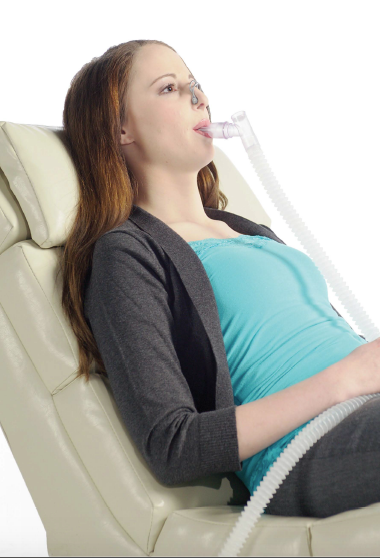 For individuals who want to know how many calories they burn in a day (their metabolism), the RMR test is your main tool to finally take off the blindfold and know exactly how to budget your calories to match your goals, whether it is weight loss or weight gain.
For individuals who want to know how many calories they burn in a day (their metabolism), the RMR test is your main tool to finally take off the blindfold and know exactly how to budget your calories to match your goals, whether it is weight loss or weight gain. Can you remember preschool when the teacher would turn down the lights and break out the cots? Nap time! You might not have had that exact experience, but as humans we are prone to napping. In our go-go-go life, time is money. To society, sleeping during the day is seen as a luxury that we cannot provide ourselves, and is usually thought of as a sign of laziness.
Can you remember preschool when the teacher would turn down the lights and break out the cots? Nap time! You might not have had that exact experience, but as humans we are prone to napping. In our go-go-go life, time is money. To society, sleeping during the day is seen as a luxury that we cannot provide ourselves, and is usually thought of as a sign of laziness.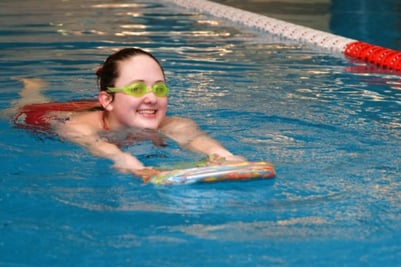 Salutations NIFS friends! Our facility has a partnership that allows members
Salutations NIFS friends! Our facility has a partnership that allows members